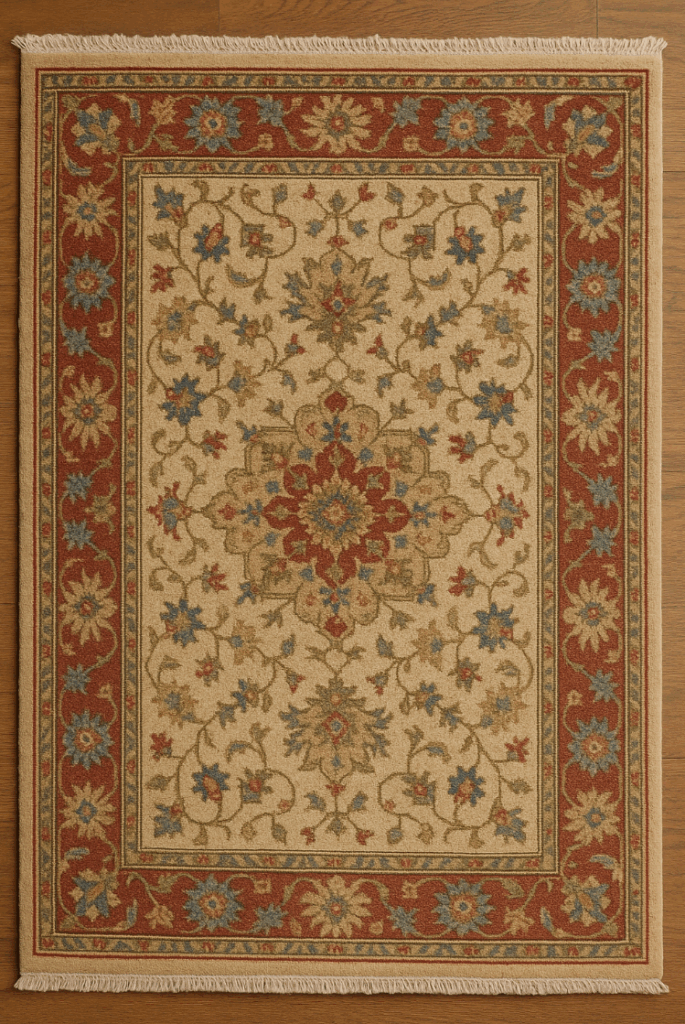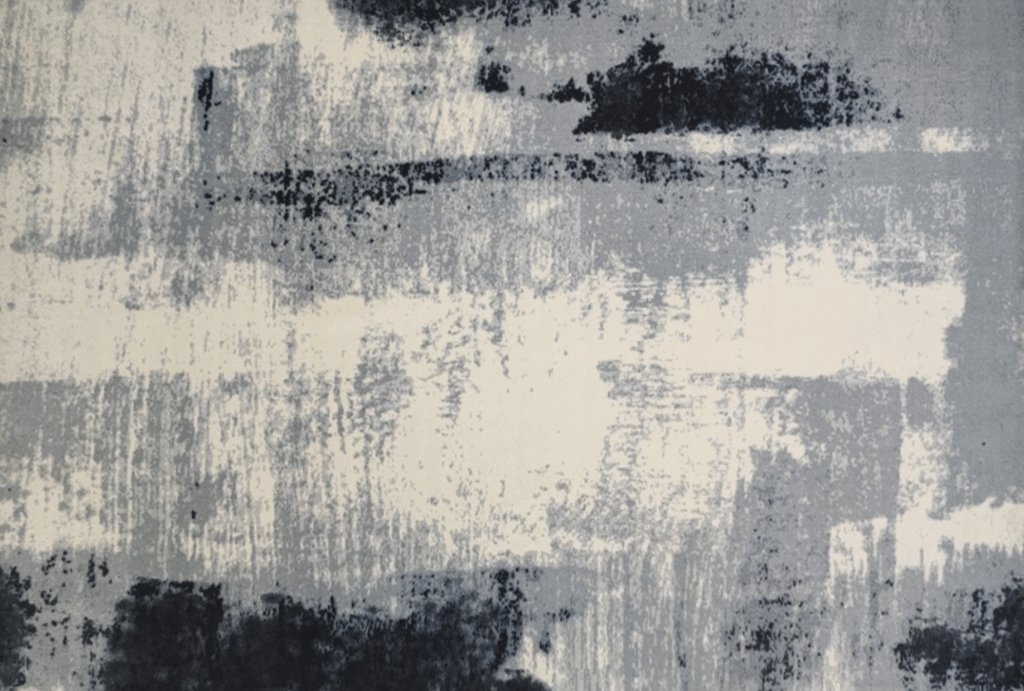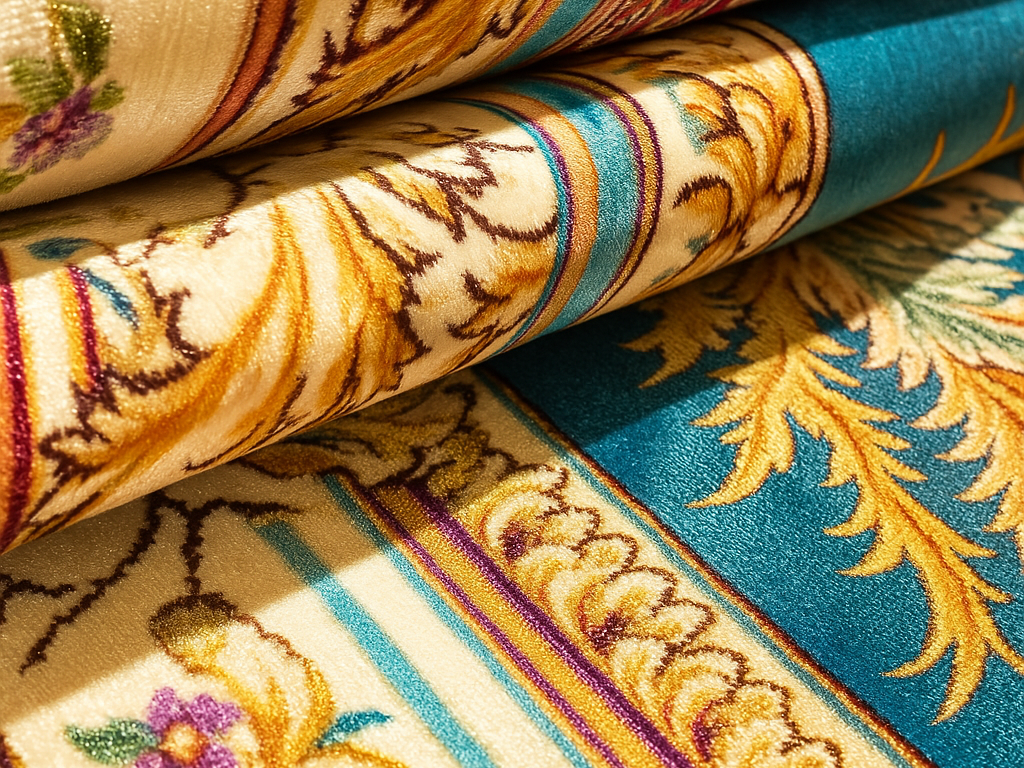When you’re investing in a rug—whether for your living room, dining area or a cozy nook—you’re not just buying a decorative floor covering. Behind every rug lies a production process, a set of choices around materials, craftsmanship, durability and aesthetic. At Valhak, we firmly believe that understanding how a rug is made helps you make a smarter choice for your space and lifestyle.

In this article, we’ll compare three major handmade (or artisan‑handcrafted) production methods: tufting, hand‑knotting and flat‑weave. We’ll explore what each means, how they differ in craftsmanship, cost, appearance, durability and suitability, and highlight how to choose which method fits your needs.
1. What are Tufting, hand‑knotted, and flat‑weave?
What is hand-tufting
Hand‑tufted rugs (sometimes simply “tufted”) are made by punching the yarn into a canvas or backing with a tufting tool or gun, then applying a backing (latex and cloth) to secure the tufts.
The process is less labour‑intensive than hand‑knotting, which typically means a lower cost and shorter production time. From the front, a good tufted rug may look very similar to a hand‑knotted version—but the back, the structure and the durability differ.
What is hand-knotted
When we say “hand‑knotted” rugs, we refer to the technique where each knot is tied individually by an artisan around the warp threads, forming the pile of the rug. Polished examples of this method can last generations. A key explanation: each knot embeds the fibre securely, which contributes to their renowned durability.
In this method, highly skilled weavers often work on vertical looms, and depending on the size and complexity, production time can stretch for months or even longer. From a quality standpoint, hand‑knotted is often considered the premium tier: unique, manually crafted, long‑lasting.
What is flat-weave
Flat‑weave rugs (sometimes also called kilims, dhurries, or tapestry‑weaves) are produced by interlacing warp and weft threads without creating a pile. Instead of loops or cut pile, you end up with a flat textile.
Because of their construction, flat‑weaves tend to be thinner, lighter, reversible, and often well suited for spaces where a low profile is helpful. Flat‑weave is a time‑honoured technique and has environmental and practical advantages (which we’ll discuss below).
2. Production process and craftsmanship differences
Let’s look more closely at how each is made: the steps, the time commitment, the artisan skill involved.
2.1 Hand‑Knotted
In hand‑knotted construction, once the warp yarns are stretched on the loom, individual knots are tied around those warp threads by hand. After each row of knots, a weft thread is inserted and beaten down to secure the structure. Over time, the pile (the upright yarn ends) is sheared to uniform height. Because each knot is made separately, the knot‑density (knots per square inch) becomes an indicator of fineness. As illustrative, one source notes that a typical 8′ × 10′ hand‑knotted rug may take thousands of hours. From a craftsmanship viewpoint, this method is the most labour‑intensive and demands highest skill.
2.2 Hand‑Tufted
In the tufting method, a base (canvas or fabric) is stretched and the design is transferred (either free‑hand or via stencil). A tufting gun (or manual punch) pushes yarn through the base, creating loops on the surface. Later, the backing is applied (often latex, plus a secondary cloth layer) to hold the tufts in place. There is no knotting around individual warp threads as with hand‑knotted rugs. This means production is faster and fewer artisan‑hours are needed. The technique allows for flexibility in shapes and designs (even irregular shapes) because the base can be cut and finished more easily.
2.3 Flat‑Weave
The flat‑weave method involves weaving horizontal weft yarns through vertical warp yarns on a loom. In many cases, the weft dominates—covering the warp—so you get a tapestry‑like surface. There is no pile (no tufted loops or cut yarn ends standing upright). Because of that, the surface is flat and often reversible. Another note: the weaving may be done by hand (manual loom) or sometimes semi‑mechanical. In any case, because there is no pile, production time tends to be less than that of high‑knot rugs.
3. Durability & longevity
How long will your investment last? Production method influences that quite significantly.

Hand‑Knotted
Because of the tight knot structure and high labour input, hand‑knotted rugs are very durable. They can last decades, and many are passed down as heirlooms. Their performance in high‑foot‑traffic areas tends to be excellent—provided the materials are high quality (e.g., wool, silk) and proper care is taken.
Hand‑Tufted
Tufted rugs are durable enough for normal domestic use—but they will not generally match the longevity of hand‑knotted rugs. One site estimates the lifespan of a hand‑tufted rug at about 10–20 years under reasonable use. Because the pile is not held via knotting but tufts secured onto a backing, there is a greater risk of yarn pull‑out or wear in heavy‑use zones.
Flat‑Weave
Flat‑weave rugs tend to be quite durable (especially in areas of less pile compression) and are particularly well‑suited to high‑traffic locations due to their low profile. Because there is no pile to “flatten”, these rugs can maintain their appearance long‑term; however, as with any textile, wear still occurs.
4. Cost implications & value
Your budget, desired lifespan, and return on investment depend in part on the production method.

Hand‑Knotted
Because of high artisan input, time required and premium materials, hand‑knotted rugs sit at the higher end of the cost spectrum. From a value perspective, you’re buying craftsmanship, uniqueness and longevity. For someone viewing a rug as a long‑term piece or potential heirloom, this method often provides the best “value per year.” That said, you also must factor in care, potential for restoration, and the fact that the upfront cost is highest.
Hand‑Tufted
Tufted rugs offer a more accessible entry point: strong design flexibility, good appearance, reasonable lifespan, and lower cost relative to hand‑knotted. If you are decorating a contemporary space, expect to refresh your look in a decade or two, or want a quality rug at mid‑range pricing, tufting is a sensible option.
Flat‑Weave
Flat‑weaves can offer excellent value: lower production cost (no pile, simpler loom structure), strong durability in many settings, and often easier maintenance. If your goal is functional flooring that still looks artisan‑crafted and supports practical use, flat‑weave is a smart choice. For many, the cost‑benefit ratio is very appealing.
5. Aesthetic, texture & suitability
Each method lends itself to different aesthetics, textures and functional suitability.

Hand‑Knotted
Texture: rich, often plush (depending on pile height), deep pile variations, nuanced design.
Appearance: intricate patterns, often traditional motifs or high‑detail modern work. When made with silk, results can be very refined.
Suitability: spaces where you want a statement piece, luxury feel, or intend to keep the rug for many years. Great for living rooms, formal dining, or spaces with moderate traffic.
Hand‑Tufted
Texture: can vary from low to medium pile. Because tufting allows flexibility, you’ll find both low‑pile contemporary styles and higher‑pile plush tufted rugs.
Appearance: good design freedom. Because the process is faster, many contemporary patterns, custom shapes and colours are available.
Suitability: modern homes, family spaces, where budget is moderate but style matters. Works well in bedrooms, lounges or transitional areas.
Flat‑Weave
Texture: inherently flat, no pile. The feel is closer to heavy textile than thick carpet. Appearance: geometric patterns, bold graphics, tribal motifs (e.g., kilims) are common. The flat surface also lends itself nicely to modern/minimal aesthetics. Suitability: high‑traffic areas (hallways, kitchens, open‑plan spaces), layered looks (over hard flooring), places where low profile is important (under sliding doors, etc). Flat‑weave is excellent for layering and for rooms where you may want to swap rugs more often.
6. Maintenance & practical considerations
No matter which method you choose, certain practicalities matter.
- Pile height / clearance: With higher‑pile hand‑knotted or some tufted rugs, door clearance and furniture legs matter. With flat‑weave, clearance is almost never an issue.
- Back of rug inspection: A reputable way to identify construction: hand‑knotted rugs will show individual knots on the back and lack a heavy latex backing. Tufted rugs often have a backing and non‑structural fringe.
- Traffic and expected lifespan: If the space sees heavy traffic (entry hall, living with kids/pets), you may want to lean toward flat‑weave or knotted. Tufted is fine, but heavy traffic will show wear earlier.
- Material and fibre choice: Regardless of method, the fibre (wool, silk, cotton, synthetics) matters greatly for performance, feel and value.
- Style refresh vs investment: If you expect to change your décor in a few years, tufted or flat‑weave may be more appropriate; if you want a long‑term anchor rug, consider hand‑knotted.
- Thickness and layering: Rug pads, under‑floor heating, furniture weight—all these factors interplay with rug construction method. Flat‑weave works especially well in layered looks and over hard floors.
7. Environmental & ethical factors
Beyond craft and cost, there are ethical and sustainability dimensions to consider.
- For flat‑weave rugs in particular, one source highlights that handmade flat‑weaves “create a minimal environmental footprint” because they often require no electricity‑driven machinery (just human‑powered looms) and support artisan communities.
- Hand‑knotted pieces also inherently support artisan traditions and can preserve cultural heritage—but the long production cycle and materials need careful sourcing.
- Tufted rugs, while artisan in nature, may have more backing materials (latex, canvas) which may affect recyclability or long‑term environmental impact.
- From an ethical standpoint, checking for fair‑labour provenance, reputable sourcing of materials (wool, dyes) and transparency in supply chain is wise for all three methods.
8. Choosing the right method for your space
Here’s a simplified decision‑framework tailored to different scenarios:
- I want something premium, I intend to keep it for decades, traffic is moderate → Go for hand‑knotted.
- I want good quality at a mid‑range budget, style matters, it’s a family space or lounge → Hand‑tufted is a smart choice.
- I need a practical, durable rug in a high traffic zone or want layering/flat style, or plan to refresh often → Flat‑weave is ideal.
- Also consider: your floor type, furniture legs, door clearance, décor style (traditional vs contemporary), frequency of maintenance, and your willingness to invest in long‑term.
9. Tufting, hand‑knotted, and flat‑weave comparison summary
| Method | Construction | Typical Cost | Durability | Aesthetic Feel | Best For |
| Hand‑Knotted | Individual knots around warp threads | Highest | Excellent (decades/century) | Rich pile, fine detail | Long term investment, living/dining zones |
| Hand‑Tufted | Yarn punched into canvas & backed | Mid‑to‑High | Good (10–20 yrs) | Medium pile, design flexible | Family spaces, budget‑conscious style choices |
| Flat‑Weave | Warp & weft interlaced, no pile | Low‑to‑Mid | Very good (especially in traffic areas) | Flat profile, graphic patterns | Entryways, high traffic, modern interiors |
10. Why Valhak emphasizes production‑method clarity
At Valhak, we believe that transparency about how a rug is made is as important as colour, size or fibre. Many customers focus on design or fibre, but the method of production fundamentally affects longevity, feel, maintenance, and value. By helping you understand tufting vs hand‑knotting vs flat‑weave, we’re enabling you to make an informed choice. Moreover, by aligning the method with your usage and budget, we aim to reduce the risk of buyer’s remorse (for example: buying hand‑tufted for a high‑traffic zone expecting decades of wear, or under‑investing in a key living space). Lastly, from a sustainability viewpoint, choosing the appropriate method means fewer replacements over time, and the possibility to select production that supports artisan communities.
11. Conclusion
In the world of rugs, not all “hand‑made” is the same. The distinction between tufting, hand‑knotting and flat‑weave is about craftsmanship, durability, cost, and suitability.
- If you want the highest craftsmanship and longest lifespan, hand‑knotted is the gold standard.
- If you want design flexibility and good value, hand‑tufted is a solid choice.
- If you prioritise practicality, durability in traffic, and low‑profile style, flat‑weave shines. At Valhak, we encourage you to evaluate your space, your usage, your budget and your décor priorities—and choose not only the design you love, but the method that supports the rug’s role in your space for years to come.
12. FAQs
1. How can I tell if a rug is truly hand‑knotted and not just “look” like one?
Check the back: in a hand‑knotted rug you’ll see the pattern mirrored and the knots visible; there’s no heavy backing or latex layer. Also look at the fringe: if the fringe is part of the warp threads rather than sewn on, that’s a sign of hand‑knotted.
2. If I live in a high‑traffic area (kids, pets, hallway), which method should I pick?
For high traffic, flat‑weave often offers the most practical combination of durability and ease of maintenance. A lower‑pile hand‑tufted may also work, but hand‑knotted might be riskier unless you’re ready to maintain it carefully.
3. Are tufted rugs less valuable because they cost less?
Not necessarily “less valuable” in terms of style or use—but yes, they generally require less time and labour, so the cost is lower and the expected lifespan is shorter than a hand‑knotted counterpart.
4. Does flat‑weave mean lesser quality?
No—quality depends on materials and craft. Flat‑weaving is simply a different method (no pile). For many spaces, the flat‑weave method is ideal and has excellent durability and style.
5. How do I decide between method if I’m on a mid‑range budget?
Start by evaluating how you’ll use the rug: space, traffic, how long you expect to keep it, and whether you prefer plushness or flat profile. If budget allows and you want longevity & luxury → hand‑knotted. If budget is moderate and style flexibility is key → hand‑tufted. If your space is practical, or you like layering and low profile → flat‑weave.


